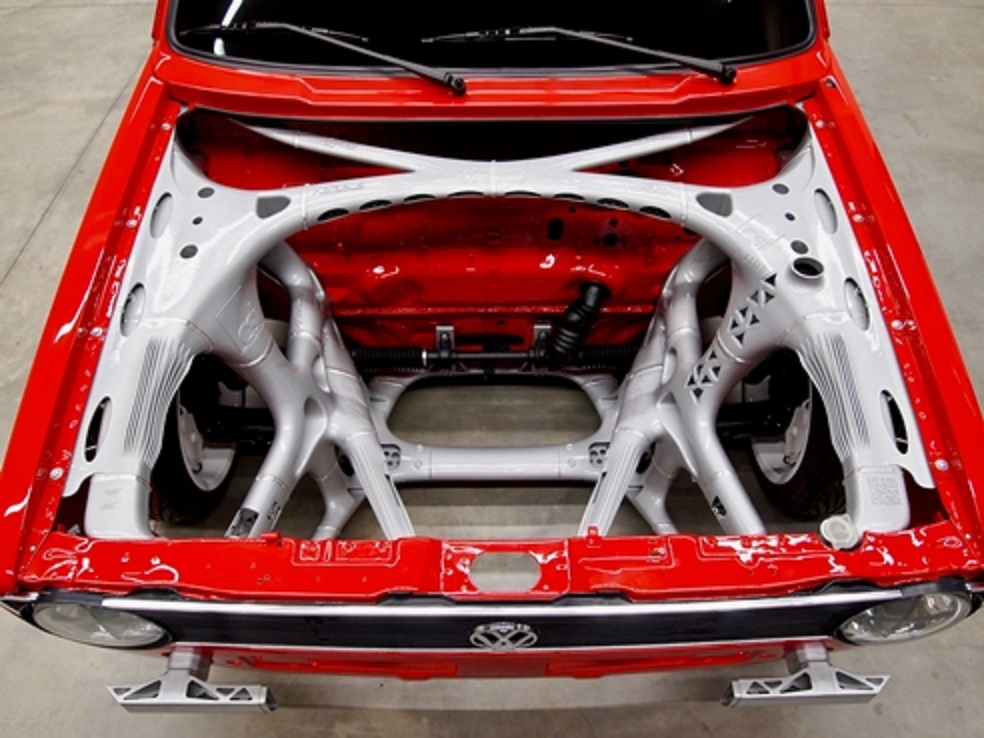
Altair, APWORKS, csi entwicklungstechnik, EOS GmbH, GERG, and Heraeus have taken part in a joint development project to 3D print the front-end structure of a VW Caddy automobile.
According to the companies, the aim of the 3i-print project was to demonstrate the future technological possibilities of 3D printing. They said that the structure is very light, stable, and features a high degree of functional integration.
Due to the trend towards electrification in the automotive sector, heat management as well as the reduction of design space and overall weight were crucial points when designing the front-end section. As a result, parts of the additively manufactured front are load-bearing structures that include details for both active and passive cooling – for example with a channeled airflow to cool batteries and brake systems. In addition, functions linked to heat management, passive safety, and fluids storage have been integrated in the design. One example for the integration of additional functions into the structure is the fountain solution tank, which could be integrated into the front end structure when conducting the topology optimization.
‘We are proud to present the Caddy with an exemplary new additively manufactured front end structure,’ said Stefan Herrmann, who is responsible for light weight design at csi. ‘The new structure and the contrast between old and new impressively demonstrates the potential that 3D printing and functional integration offer, particularly for the automotive industry.’
This story is reprinted from material from 3i-print, with editorial changes made by Materials Today. The views expressed in this article do not necessarily represent those of Elsevier.



